You just purchased a new home with a water softener already in it, but the house has been empty for some time and the water softener has not been used. Is the water softener ok and how long can a water softener sit without being used?
Providing that a water softener has not been exposed to extreme cold, extreme heat, or harmful chemicals, a water softener can sit for several years without causing damage to the water softener or the resin.
A water softener can often be left to sit without being used for an extended period of time without causing any damage to the system, but there are some factors to consider when attempting to use a water softener that has sat unused for a while.
Here’s What We Will Be Covering:
- Has The Water Softener Been Bypassed?
- Has The Water Softener Been Unplugged?
- Do You Have Any Iron In Your Water?
- Has Water Been Used When The Water Softener Was Out Of Salt?
- Was The Water Softener Operating Properly Before it Was Left To Sit?
- Do I Need To Replace The Resin In A Water Softener That Has Not Been Used?
- Should You Replace The Salt In A Water Softener That Has Not Been Used?
- If A Water Softener Has Not Been Used For A While, Do You Need To Have It Serviced?
- Do I Need To Shut Off My Water Softener When Away From Home?
Has The Water Softener Been Bypassed?
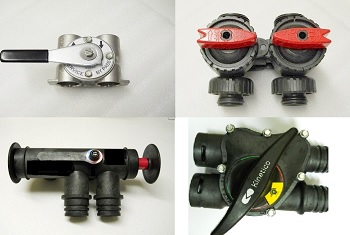
When a water softener has been bypassed, no water will flow through the water softener. This means that the water softener resin has not been removing hardness from the water so it will likely still be in good condition.
On the other hand, if your water contains chlorine from a municipal water source, the chlorine could have damaged the resin over time.
Has The Water Softener Been Unplugged?
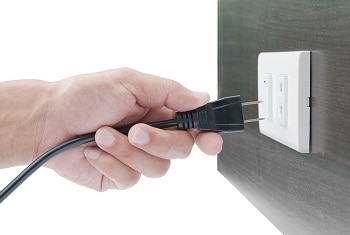
Unplugging a water softener does NOT stop the water softener resin from removing hardness from the water flowing through the water softener.
When you unplug a water softener, you are turning off the electronic part of the water softener that makes the water softener regenerate its resin.
If a water softener has been unplugged and water has continued to be used, hardness from the water will continue to accumulate on the resin which could cause damage to the resin.
Do You Have Any Iron In Your Water?
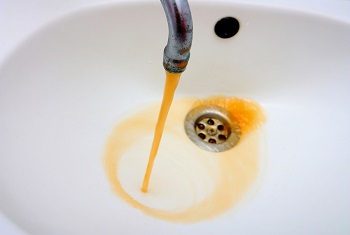
If you notice yellow or orange staining in sinks, bathtubs, or on water fixtures in your home after the water softener has not been used for some time, you should test your water for iron that normally would be removed by the water softener.
A water softener can remove iron from your water but if a water softener is left to sit without being used properly, the iron that it removes can collect in its resin tank to the point where the resin would need to be replaced.
Although replacing the resin in a water softener does not mean that it needs to be replaced if left to sit without being used, the water softener may need to regenerate several times to remove iron build-up inside of the resin tank or the resin may need to be replaced.
Has Water Been Used When The Water Softener Was Out Of Salt?
Most water softeners meter water flowing through them to determine when the water softener should use brine to regenerate its resin.
If there is no salt in the water softener brine tank to create a brine, the water softener resin will not regenerate and hardness will build up on the resin which could cause permanent damage to the resin.
Was The Water Softener Operating Properly Before it Was Left To Sit?
If you know that the water softener was operating properly before it was left to sit, it is very likely that it will still operate properly after it has been left to sit as long as it has brine to regenerate its resin.
You can sometimes test to see if the water softener was working properly before it was left to sit by testing water that has not been used since the water softener was last used.
A toilet tank, garden spigot, or guest bathroom would be great places to find water that has not been touched since the water softener was used.
Simply test the water with a water hardness test strip to see if the water is soft.
If the water is soft, the water softener was likely working properly before it was left to sit without being used.
Do I Need To Replace The Resin In A Water Softener That Has Not Been Used?
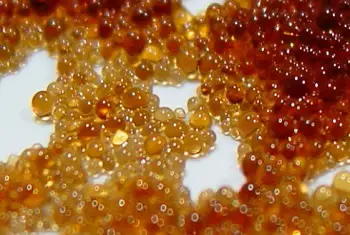
You may need to replace the resin inside a water softener that has not properly regenerated the resin after not being used for an extended period of time, but the resin may still be fine after it has been regenerated (Cleaned) several times.
Common water softener resin is made of Polystyrene which is a very durable form of plastic that does not lose its effectiveness to remove hardness from water for many years.
Under normal circumstances, the resin in a water softener that has not been exposed to damaging sediment or harmful chemicals like Chlorine will potentially last far longer than the rest of the water softener.
Before you replace the resin in a water softener that has been without salt for an extended period of time, add a few bags of salt to the brine tank, wait about 4 hours for the salt to create a strong brine, and then regenerate the water softener 3 or 4 times testing the hardness of the outcoming water after each regenerating to see if it becomes soft.
If you find that the outcoming water becomes soft, the resin may very well be just fine with no need to replace it.
Should You Replace The Salt In A Water Softener That Has Not Been Used?
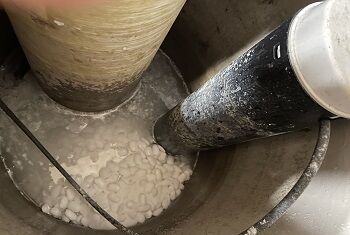
Providing that the brine tank has been covered while the water softener has been left to sit, and salt in the brine tank should be fine.
If you see dirty water or salt in the brine tank and would like to replace it, scoop out as much salt as you can and save it for other uses.
Once you have scooped out all of the salt and water that you can from the brine tank, you can use a wet/dry shop vac to remove the rest if you choose
Once you have removed the old salt from the brine tank, refill the brine tank with new salt to about ¾ of the way up the tank, and then add about 6 gallons of clean water to create a brine for the next regeneration.
If A Water Softener Has Not Been Used For A While, Do You Need To Have It Serviced?
In some cases, a water softener has been left to sit without being used because it was not working correctly.
The brine tank being full of water is a good sign that the water softener was not working correctly and may need to be serviced.
I often recommend that you do have a water softener that has not been used in an extended period of time serviced by a water treatment professional so they can re-test your water for hardness and iron and properly set your water softener hardness setting.
They will also clean or change certain parts of your water softener to make sure that it will operate most efficiently. Remember to ask your water treatment professional questions that you may have about your water and your water softener maintenance.
Do I Need To Shut Off My Water Softener When Away From Home?
For short-term trips of just a few weeks, there is normally no need to do anything to your water softener.
Most water softeners regenerate based on how much water has been used in the home, so if you are away from home and not using any water, your water softener should not regenerate until you come back to your home and start using water again.
If you are planning an extended trip, check out my article: Should I Turn Off My Water Softener When Going On Vacation?
Paul Burkhardt
To Sum Up:
Just because a water softener has been left to sit without being used for an extended period of time does not mean that it will no longer be able to work just fine.
In many cases, you can just add a few bags of water softener salt to the brine tank and manually regenerate the water softener a few times to get it up and running like normal.
Adding a dose of water-softener resin cleaner will help to bring the water-softener resin back to life if the resin has not been regenerated for an extended period of time.


My glasses and silverware show signs of salt from my water softer, is this right?
Hello Lawrence and thank you for the question.
The first thing I suggest you do is to verify that it is salt residue on your glasses and dishware and not hard water stains.
Use a damp cloth or paper towel to clean off the residue. If it comes off with very little effort, it is likely salt. If it requires a lot of rubbing to get the residue off, it is likely hard water stains and you should test your water for hardness.
If it is salt residue, your water softener may not be rinsing its resin thoroughly enough after regeneration. You could have a clogged injector of possibly low water pressure going into the water softener which can lead to salt being left behind after the water softener has regenerated.
You may want to test the TDS (Total Dissolved Solids) of your unsoftened water before the water softener and compare it to your softened water. If you find that the TDS in your softened water is only a few hundred or less, you should not be getting significant staining due to salt.
If you notice that the TDS of your unsoftened water is more than a few hundred (maybe up to 400 or so) you may have excessive salt in the water entering the home and it is not caused by the water softener at all.
If the staining does not come off easily, you most likely have hard water or if the TDS of your softened water is much higher than the water going into your water softener, your water softener needs to be serviced. Your injector may be clogged or there could be a restriction causing poor water pressure through the water softener.
I hope this was helpful.
Paul
I currently live in the Texas Hill Country with hard water ( well water) but also have a rainwater catchment system which is my primary water source of house water. The well water is a backup in the event the drought continues and my 50k tank runs dry. I have both systems seperated in the garage so I can switch be between the water source. The well water would go through a sediment filter ( maybe a carbon filter) and then a water softener. The well water goes through two micron filters and then a uv light. My question is the water well filters and softener could go a year or so with out use, so how do I properly maintain the system so its ready to go when I need to switch over to my well water?
Hello Dan and thank you for the question.
There is not much on a water softener that you would need to maintain if the water softener is not being used, my primary concern would be the growth of bacteria inside of the water softener if it sits unused with no water flowing through it.
Providing you have the water going through the UV light before the water softener, there should not be any organic material getting into the water softener so there should not be a problem.
I recommend removing the sediment or carbon filter cartridge if not in use for a long period of time to prevent any bacteria growth in the cartridge and running water through the water softener every month or two to keep the water inside of the system fresh.
You can run a few ounces of resin cleaner through the water softener when you need to use it to sanitize the inside of the system but for the most part, if your water is going through a properly working UV system, the water inside of the water softener should be fine but regenerating the water softener every few months would be a good idea.
I hope this was helpful.
Paul
If a non electric softener has been allowed to dry out because it was taken out of a house when somebody moved, does that damage the resin it has been disconnected for 12 months and is being offered secondhand now. The machine is only 18 months old so I was thinking of buying it.
Hello Shaun, and thank you for the question.
Standard water softener resin will not be damaged if it is left to dry out. Providing that there was no harmful chemicals left on the resin when it stopped being used, the resin should work just fine even though it has been dried out.
I hope this was helpful.
Paul